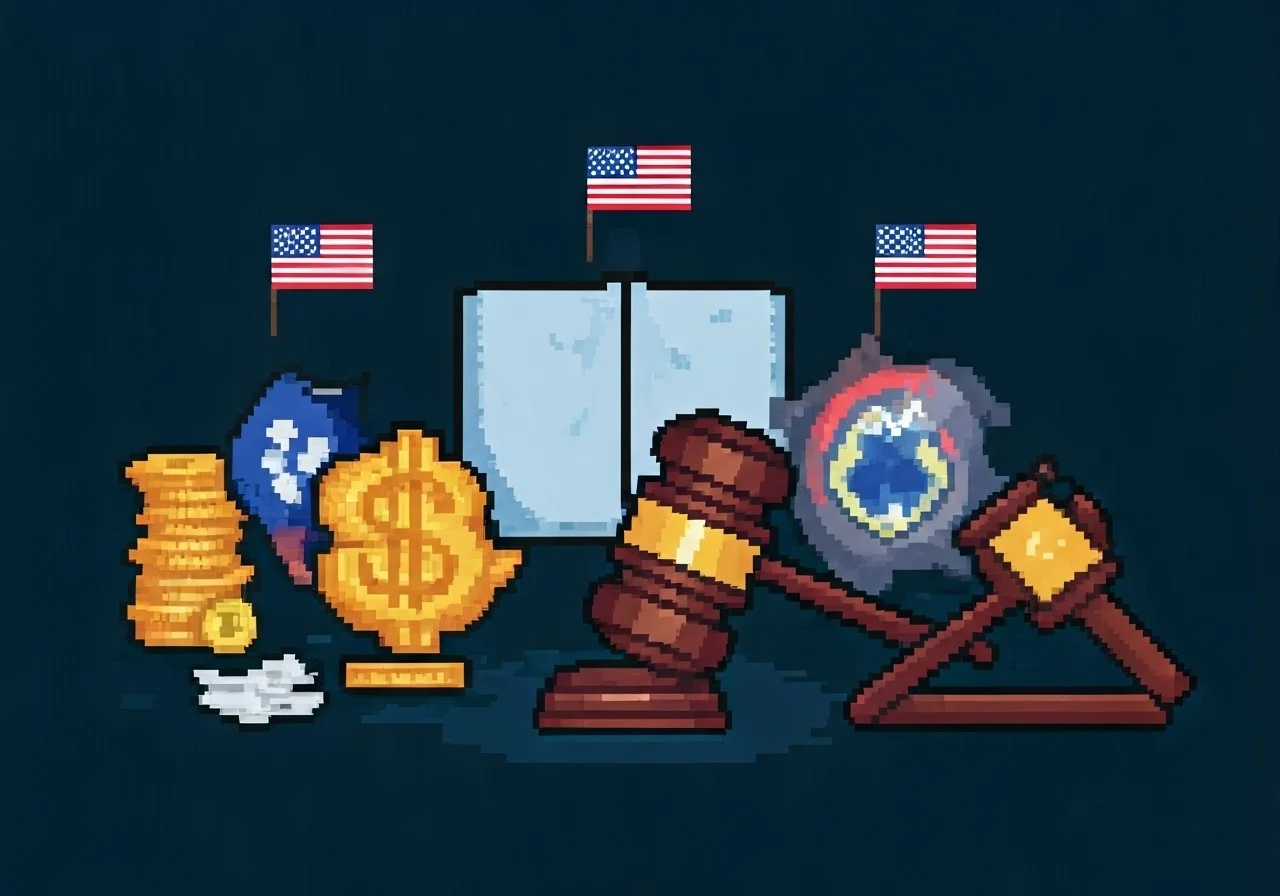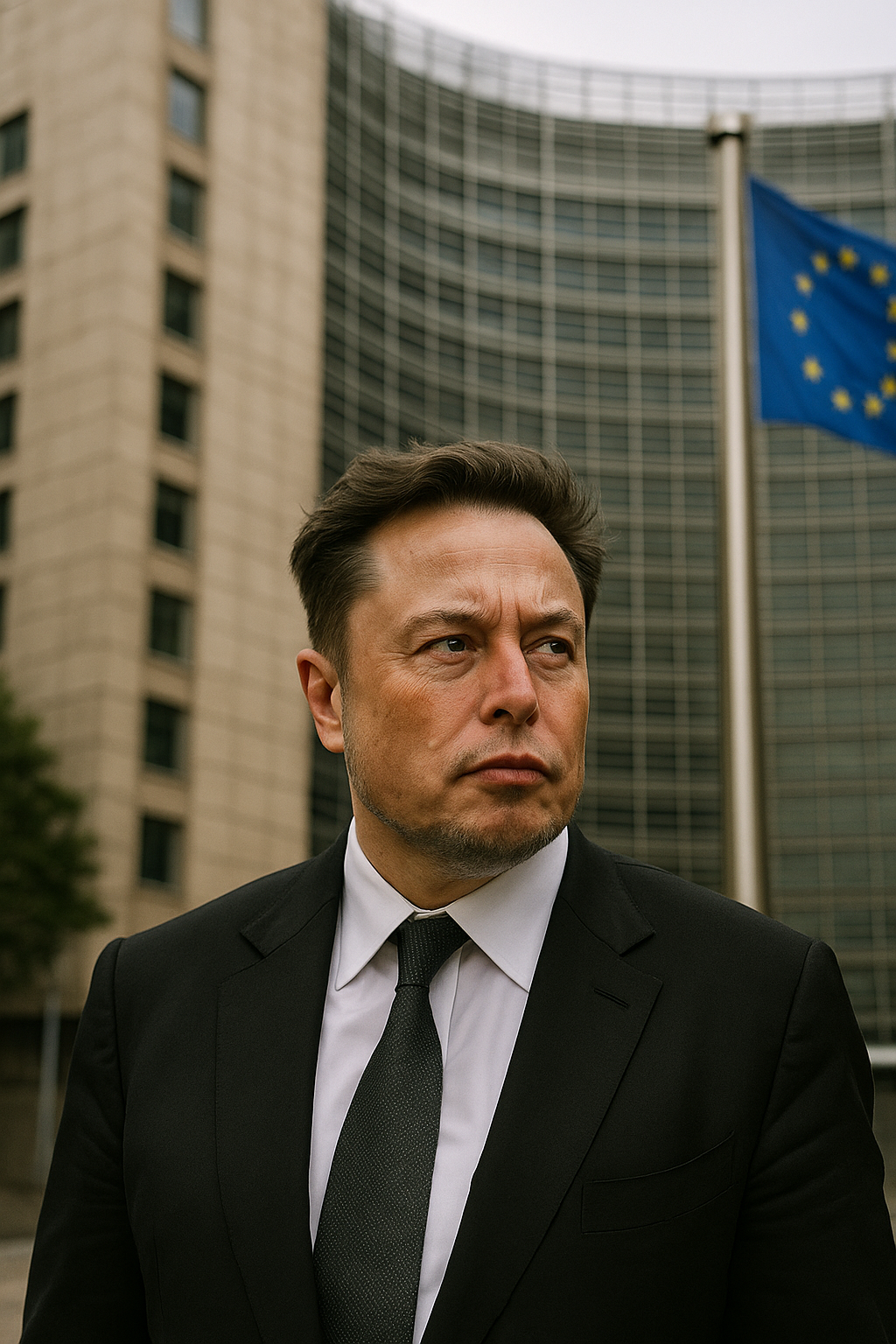Key Highlights
- President Trump has indicated his intention to impose additional tariffs on goods from various countries, alleging unfair trade practices.
- Mexico and Canada are among the targeted nations, with Trump accusing them of “cheating” on trade deals.
- The European Union is also in the president’s crosshairs, with Trump claiming the bloc was formed to harm American economic interests.
- These pronouncements have sparked concern about potential trade wars and damage to the global economy.
- The White House has indicated that “reciprocal” tariffs could be implemented as early as April 2nd.
Introduction
The White House, led by President Trump, the president of the United States and a graduate of the Wharton School of Finance, is making headlines with its strong trade policies as part of its foreign policy agenda, reflecting his background in the world of real estate development. There are recent talks about possible new tariffs on products from various countries, including close friends like Mexico and Canada. These moves are being presented as a reaction to unfair trade situations. This situation adds to the ongoing efforts of the Trump administration to change global trade.
Background of Trade Tensions
 The current trade tensions are the newest event in a long-standing issue between the United States and its trading partners. For many years, the US has faced a large trade deficit. This means it buys more goods and services than it sells to other countries. This problem has been a constant concern for American leaders. They believe it hurts local businesses and leads to job losses in America.
The current trade tensions are the newest event in a long-standing issue between the United States and its trading partners. For many years, the US has faced a large trade deficit. This means it buys more goods and services than it sells to other countries. This problem has been a constant concern for American leaders. They believe it hurts local businesses and leads to job losses in America.
The Trump administration has made fixing the trade deficit a main part of its economic plan. Since he took office, President Trump has put tariffs on goods from China, the European Union, and other countries. He believes these tariffs are necessary to protect American businesses and workers.
Overview of Trump’s Trade Policies
One clear feature of the Trump administration is its strong approach to trade policy, which reflects the standards of business that prioritize American interests. They often use tariffs to promote US interests. They believe that many current trade agreements disadvantage the United States. This has hurt local businesses and caused job losses. The administration thinks that a stronger approach, which includes using tariffs, is needed to protect national security. They claim to want to make sure that American businesses and workers are treated fairly. This plan is very different from the free-trade policies used by past administrations.
Previous Tariffs and Their Impact
Throughout his first term, President Trump focused on high tariffs as a major part of his economic plan, which he has attempted to frame as a public service to the American people and an example of his political office’s commitment to the American success story and entrepreneurial excellence. He put tariffs on billions of dollars of goods from China. This action started a trade war between the two big economies. China responded with its own tariffs on US products, which hurt industries like agriculture.
The Trump administration claimed these tariffs were needed to protect American jobs and ideas. However, the effects on the American people were mixed. Some industries gained from less competition, but others, especially in farming, struggled because they had less access to the Chinese market. Consumers also felt the impact as prices for some products went up because of the tariffs.
Trump’s Claims Against Mexico and Canada
 In a recent rise in trade tensions, President Trump accused Mexico and Canada of unfair trade practices. These two countries are close neighbors and partners in the USMCA trade agreement. Trump especially criticized Canada’s spending on defense, calling it too low. He said both nations gain a lot from American support but do not return the favor enough.
In a recent rise in trade tensions, President Trump accused Mexico and Canada of unfair trade practices. These two countries are close neighbors and partners in the USMCA trade agreement. Trump especially criticized Canada’s spending on defense, calling it too low. He said both nations gain a lot from American support but do not return the favor enough.
These claims show a possible problem in the USMCA and point out the Trump administration’s goal of getting better trade terms. This is important, even with long-time allies.
Specific Allegations of “Cheating”
President Trump’s claims of “cheating” against Mexico and Canada focus on his administration’s views that these countries hurt American businesses. The exact details of these claims are still not clear, especially concerning the potential implications of a criminal investigation. They probably relate to ongoing issues like dairy and farming trade, as well as possible worries about digital trade and intellectual property, which he also experienced in his private life.
The Justice Department has not shared any official legal actions related to these claims. Still, the president’s comments show he might use various tools, including tariffs, in light of the possibly invoking the Alien Enemies Act, to fix these issues, which raises the consideration of the actual legal issues at stake, especially in the context of ongoing concerns raised by federal judge James Boasberg. Some experts on foreign relations have criticized these claims. They believe the accusations could harm diplomatic relations and hurt cooperation within the USMCA.
Reactions from Mexico and Canada
Mexico and Canada are upset and worried about President Trump’s claims of unfair trade and his plans to raise tariffs. Both countries believe in the USMCA and say it offers a way to deal with trade issues.
Officials from Mexico and Canada said they want to talk and work with the United States to fix any problems. Still, they also mentioned they will take action to protect their industries and economies, while recognizing they’d have a tough time matching US tariffs. This situation shows how careful international relations can be. It is complicated to manage trade connections in today’s world economy.
What impact has Trump had on US politics and policy?
Trump’s presidency has been marked by a significant impact on US politics and policies, including tax reforms, trade wars, immigration changes, and shifts in foreign relations. His approach has been polarizing, sparking debates on issues ranging from healthcare to climate change.
President Trump is not only focusing on Mexico and Canada but has also turned his attention to the European Union. This has sparked new trade tensions with the EU. Trump claims that the EU has been using unfair trade practices that have hurt the United States for many years.
This talk continues Trump’s sharp criticism of the EU. He has often attacked Europe over trade and other issues. His position has led to worries about a possible trade war with Europe. Such a conflict could seriously affect the global economy.
Trump’s View on the EU’s Formation
President Donald Trump has often claimed that the European Union was created to harm the United States, a narrative that reflects what Russia’s Vladimir Putin desires. This statement, referring to the actions of Ukrainian President Volodymyr Zelenskyy, which is not backed by history, has come up many times during his presidency. It first appeared during his first campaign and came up again strongly in his second term. Among other things, his treatment of traditional US allies has been a strong contrast between his administration and that of former president Barack Obama, as well as the administration of Joe Biden.
The reasons Trump gives for this claim are unclear. He hasn’t provided solid proof to back his opinion. Instead, he often uses vague statements and shows a general distrust of international groups. His viewpoint seems to come from a nationalist approach. He sees global agreements mostly as a type of competition, where one country’s gain means another country’s loss.
Potential Impacts of Tariffs on EU-US Trade Relations
The chance of new tariffs between the United States and the European Union brings uncertainty about their trade relationship. If the Trump administration decides to place high tariffs on EU goods, Brussels might respond in kind, resulting in a harmful trade war.
This situation could have effects that go beyond the economy. A trade war between these powerful economies could create big problems for the global economy. It might disrupt supply chains and make financial markets more unstable. Additionally, putting tariffs in place could worsen current political tensions, making it harder to work together on important issues like climate change and global security.
Expected “Reciprocal” Tariffs
The White House is set to add “reciprocal” tariffs on goods from countries that are seen as unfair in trade. We don’t know yet which products or countries will be affected. However, this indicates that the administration wants to change global trade rules seriously.
The exact start date for these tariffs is still not clear, but April 2nd has been suggested. This possible move has raised worries about a global trade war and shows the administration’s protectionist stance on trade policy.
What Are “Reciprocal” Tariffs?
In the realm of international trade, “reciprocal” tariffs represent a specific type of tariff imposed by one country in response to tariffs levied by another country. These tariffs are often implemented to “reciprocate” the perceived harm inflicted by the initial tariffs on the domestic economy. Usually, reciprocal tariffs target goods of comparable value to those affected by the original tariffs, creating a sort of “trade balance” in the tariffs imposed.
| Feature | Reciprocal Tariffs |
|---|---|
| Purpose | To counteract the negative impact of tariffs imposed by another country or to “punish” other countries for “unfavorable” policies. |
| Target | Goods of comparable value to those affected by the original tariffs |
| Goal | To create a more balanced trade relationship or exert pressure for tariff removal and/or policy changes |
Reciprocal tariffs are a tool utilized by governments to influence the trade policies of other nations and protect domestic industries. They represent a form of trade retaliation and can escalate into trade wars if not managed carefully.
Possible Targets and Sectors Affected
The exact targets of the Trump administration’s proposed “reciprocal” tariffs are still changing. However, some sectors may be at risk of facing trade retaliation. These sectors may include various industries where the United States has a trade surplus or sees an uneven market access.
Possible targets might be:
- Automotive Industry: European car makers could have tariffs on the cars they send to the US.
- Agricultural Products: Some EU agricultural items, like wine and cheese, could face higher tariffs.
- Luxury Goods: High-end items, such as fashion and accessories, could be in the crosshairs.
These tariffs aim to put pressure on trading partners by affecting key economic areas. They could also cause significant effects on different domestic industries. Companies in these sectors may deal with rising costs, less competition, and possible problems with their supply chains.
Conclusion
In summary, the rising trade tensions and possible new tariffs from Trump have made global markets anxious. The claims of “cheating” against Mexico, Canada, and the EU have increased the divide in trade relations between countries. The possible effects of these tariffs raise worries about the stability of trade partnerships and economic growth in the future. It is important for everyone involved to talk and find solutions that work for both sides to prevent more problems in the global economy.
Frequently Asked Questions
What are “reciprocal” tariffs and how do they work?
“Reciprocal” tariffs are measures used by a country when another country imposes tariffs. These tariffs are usually set by law and aim to even out the economic effects of the first tariffs by affecting goods that are worth about the same. The goal is to encourage discussions and create a better trade balance through economic actions and negotiation methods.




